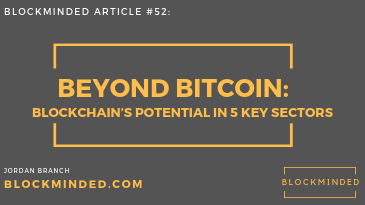When I first heard the term, my mind went about as blank as the term suggests. As a good crypto student, I did a quick Google search on “what is a whitepaper”. What I found was both concise, yet open ended at the same time. “A White paper combines a detailed presentation of the project and a business plan in one document.” Every blockchain project should have a whitepaper. Some whitepapers more detailed than others. My goal in this article is to take you through what makes up a good whitepaper.
Simply put, a whitepaper starts out just as it seems – a blank paper. There is no pre-formulated schedule that is mandated to be followed. However, with that being said, there are some aspects that all good whitepapers contain. To break it down simply, an effective white paper should consist of the following five thing: (1) The Problem, (2) The Solution or Project, (3) Commercialization, (4) The Team, and (5) Token Issuance Plan.
The Problem
Put simply, there must be a problem that the project is trying to solve. If there is no (real) problem, then there should be no project in the first place, right? This is typically in the first section of a whitepaper. It lays out the issue, bottleneck or obstacle the project is looking to solve or improve.
Typical points that are covered include, (1) the market or business, (2) the potential customer base, and (3) the advantage(s) of solving the problems. The issue should be described simply and concisely. For example, Satoshi Nakamoto’s description of the problem that Bitcoin solves as “We propose a solution to the double-spending problem using a peer-to-peer distributed timestamp server to generate computational proof of the chronological order of transactions.”
The Solution
Bitcoin’s whitepaper does a great job by combining the description of the problem with the solution the project will provide. Many times these first two portions go hand-in-hand. This portion delves more into what the project and token encompass.
Typical points that are covered include (1) a product description, (2) prototype information, (3) any current users, and (4) the development strategy. This section can be as long or as concise as it needs be. However, at the very least, after reading a good white paper, you should be able to understand clearly how the project is going to solve the problem.


Commercialization
This portion of the whitepaper typically resembles a road-map. It should lay out a more refined technical description about the deployment of the project and token. It should map out the development and launch of the project, breaking it down into stages. Typically, you will see this portion break out the next 12-24 months of the project.
Road-maps help investors get an understanding of how the project will progress. It allows investors to track the project’s progress against this road-map. This helps investors keep the project accountable. Investors should be wary of projects that do not provide developmental road-maps for their projects.
The Team
Simply put, this is the portion where you see a lot of head-shots and short bios. This section should provide you information on the technical and business experience for the team involved in the project.
Some projects choose to keep their founders anonymous. This makes sense since a keep component of cryptocurrencies is the anonymity (or psuedo-anonymity) that they afford users. So why shouldn’t the founders take advantage of that same perk? However, investors should be careful in these cases. It’s difficult to assess the potential of the project if you do not know who is behind development. After all, the most important driver of success of any project (cryptocurrency related or not) is the team building the platform
Token Issuance
This section is often one of, if not, the last portion of the white paper. There should be some sort of description of the utility or functionality of the token. In addition, there should be some information concerning the economic issues (i.e. how and what the token will offer), technical aspects (the number of tokens, the expense, creation, etc.) and how the tokens will be distributed.
It’s important to understand how the tokens will be issued after launch. How much of the supply will be kept by the development team? Will all tokens be released at once or will they slowly be introduced into the ecosystem? These are important question and they should be answered when trying to understand the feasibility of a project in this space.
Summarizing “What is a Whitepaper”
In the end, the format and content of the whitepaper is left up to the development team. Some whitepapers are certainly better than others. However, there are some general topics that should be baseline features, as described above. A good whitepaper will not save a bad project. However, a solid whitepaper can really help a good project stand out. Hopefully this has answered the question of what is a whitepaper!
Check out our other articles to get an in-depth explanation of what is blockchain technology!



